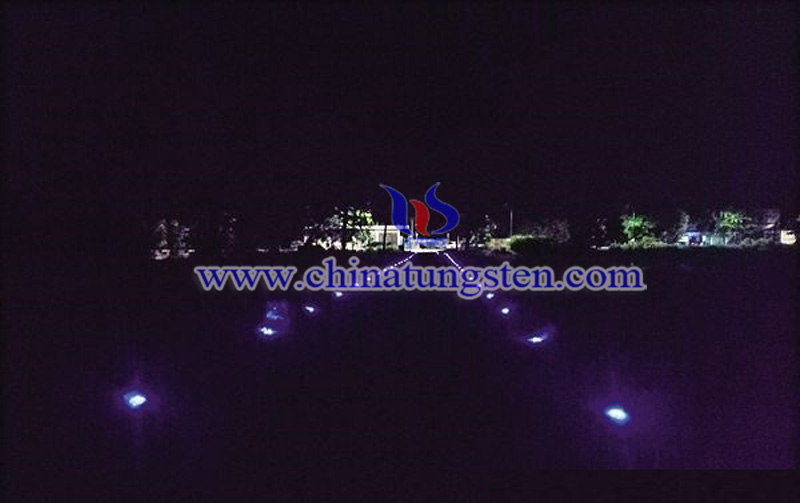First Rare Earth Energy-Storing “Luminous Road” in Hainan
- Details
- Category: Tungsten's News
- Published on Wednesday, 31 July 2019 08:47
Rare earth energy-storing “Luminous Road” is about to be put into use in Hainan recently, and it has caused widespread concern by crowd people. The reporter of the Southern Metropolis Daily contacted the relevant departments to visit the first self-illuminated road in Chengmai County, Jinjiang Town, Hainan City, together with the project owner responsible for the “Glowing Road”. Demystifying the mystery of the self-illuminating road.
It is understood that the self-illuminated road project in Chengmai County consists of two demonstration sections, namely, Daonan Village and Chunfang Village. The total length of the road is nearly 20 kilometers. The reporter first visited the demonstration section of Daonan Village Road. A square energy-storing self-illuminating landmark was laid every 3 meters on both sides of the road. When the lights are turned on, the landmarks on the left side of the road are yellow, and the landmarks on the right are white. When the lights are turned off, the landmarks on both sides are blue and the road boundaries are clear. In Chunfang Village, both sides of the village road are farmland and canals, which are quiet and dark at night. The reporter found that the blue light flashing on both sides of the road is relatively soft. In addition to the comfort of the lighting, the landscape effect is also very obvious.
“Whether it is sunny or rainy, it only takes 5 to 15 minutes to absorb and store natural light, motor vehicles and various types of light energy. It can be used as a light source in the nighttime and no-light environment, and can maintain self-illumination for 12 hours without any other energy.” Baisheng Yu, the person in charge of the luminous road project said, “When raining, after installing the self-illuminating landmarks, the road lighting effect will be more obvious.”

In daily life, the watches are worn by people often have a small amount of alkaline earth aluminate materials, which can absorb daylight, even the lights of the car, and emit cold light to achieve the effect of night illumination.” The construction of rural roads is the first time in Hainan.
According to reports, the landmarks of the new rare earth energy-storing self-luminous materials can be used to control the flash and brightness through the internal chip of the landmark, and combine passive reflection with active illumination to facilitate the night travel of vehicles and pedestrians.
After installing the energy-storing self-illuminating landmarks, it can pass without lighting, which can improve the safety factor of rural roads at night, making the road boundaries clearer, and villagers ride and walk along the roads. After the passage, the middle of the road is more spacious, and the passage and utilization rate of the village road are improved.
Most importantly, this technology requires no maintenance and can significantly reduce installation costs, wiring costs, electricity maintenance costs, and post-maintenance costs. Compared with the installation of street lamps, the self-illuminating project only needs to invest 50,000-60,000 yuan per kilometer, and the installed lamp is invested more than 500,000 per kilometer, and the electricity and maintenance costs are also required. The new technology does not consume energy, just a simple scrub.
Rare earth energy-storing “Luminous Road” provides a reference scheme for rural road lighting problems. However, the reporter recently learned that the project in Jinjiang, related new materials and equipment is still in the stage of demonstration promotion and application in Hainan province. The future promotion prospect still needs time and market inspection.
- Rare Earth Manufacturer & Supplier, Chinatungsten Online: www.chinatungsten.com
- Tungsten News & Prices of China Tungsten Industry Association: www.ctia.com.cn
- Molybdenum News & Price: news.molybdenum.com.cn
- Tel.: 86 592 5129696; Fax: 86 592 5129797; Email: sales@chinatungsten.com



 sales@chinatungsten.com
sales@chinatungsten.com